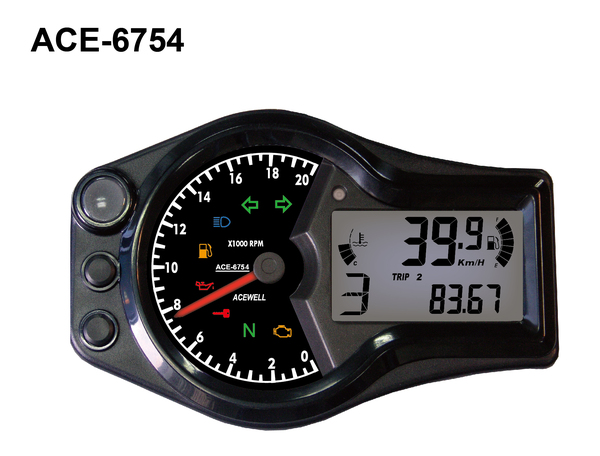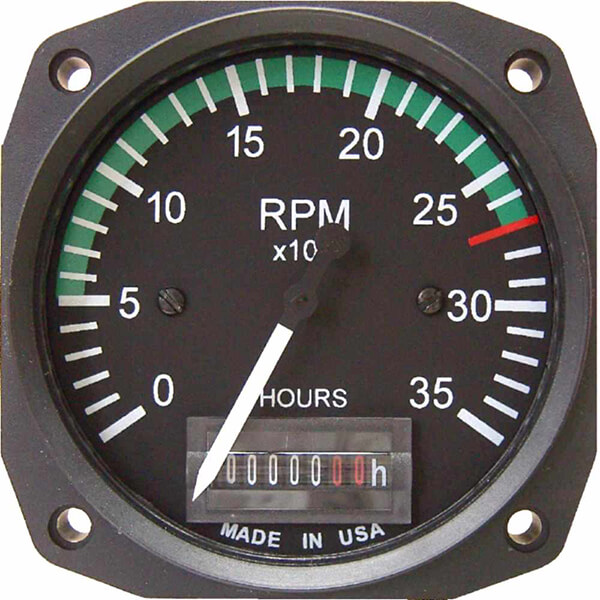How a Tachometer Helps Display Engine Wellness and Efficiency
How a Tachometer Helps Display Engine Wellness and Efficiency
Blog Article
The Importance of a Tachometer in Keeping An Eye On Engine Rate and Performance in Automotive Applications
In the world of auto engineering, the tachometer stands as a crucial instrument in the motorist's arsenal, giving a straight window into the inner functions of an automobile's engine. Past its feature as a plain gauge of changes per minute (RPM), the tachometer works as a crucial tool for fanatics and professionals alike, offering real-time insights into engine efficiency and wellness. Recognizing the importance of this gadget goes beyond surface-level monitorings, diving into the elaborate connection in between engine speed, power result, and overall driving experience. As we explore the diverse function of the tachometer in automotive applications, a deeper gratitude for its influence on lorry dynamics and effectiveness starts to arise.
Value of Keeping Track Of Engine RPM
Keeping track of engine RPM, or transformations per minute, is a crucial facet of automotive maintenance and efficiency examination. Engine RPM directly correlates with the rate at which the engine's crankshaft rotates, indicating how rapidly the engine is running.
Furthermore, monitoring engine RPM is important for performance examination in auto racing and high-performance automobiles. Keeping optimum RPM degrees is crucial for accomplishing peak power output and acceleration. Racers typically make use of tachometers to guarantee they are running within the excellent RPM array for optimum efficiency. In recap, checking engine RPM is not only essential for identifying concerns but likewise for optimizing engine performance in different vehicle applications.

Benefits of Real-Time Information
In auto applications, real-time information plays an important duty in offering immediate understandings right into the efficiency and problem of the car. By continually keeping an eye on numerous criteria such as engine speed, temperature, gas usage, and much more, real-time data supplies various benefits that add to enhanced performance and safety when driving.
Furthermore, real-time information helps with performance optimization by offering immediate comments on driving habits and engine efficiency. Chauffeurs can readjust their behavior in real-time based on this details to attain better fuel economic climate and lengthen the lifespan of their vehicle.

Furthermore, real-time information plays an essential duty in modern-day automobile diagnostics, allowing technicians to promptly identify and address breakdowns. This leads to reduced downtime, reduced upkeep prices, and eventually, boosted total car reliability and longevity (tachometer). By using the power of real-time data, auto stakeholders can make educated choices that positively impact both the performance and long life of the car
Influence On Equipment Shifts
The tachometer plays an important duty in enhancing equipment shifts by supplying real-time engine rate data to the vehicle driver. When approaching the redline on the tachometer, it indicates the motorist to upshift to stop over-revving the engine and creating possible browse around this site damages.
Furthermore, the tachometer aids in achieving smoother equipment transitions, specifically in manual transmissions. By keeping an eye on engine rate, chauffeurs can perform gear shifts at the optimal RPM array, decreasing snagging activities and lessening wear on the transmission elements. This accuracy on duty modifications not only improves driving convenience yet likewise contributes to fuel efficiency.
Enhancing Fuel Effectiveness
Given the crucial role the tachometer plays in maximizing gear changes for efficiency and engine health and wellness, it directly adds to optimizing fuel performance in vehicle applications. By giving real-time feedback on engine speed, the tachometer assists drivers in maintaining the most effective RPM array for gas economic climate. When drivers regularly keep track of the tachometer and adjust their driving habits accordingly, they can stay clear of unnecessary gas intake triggered by over-revving or hauling the engine.
Furthermore, the tachometer helps drivers identify the most fuel-efficient equipment to be in at any given moment, avoiding the engine from working tougher than needed. This is particularly important during acceleration and cruising, where remaining in the appropriate gear can dramatically influence gas efficiency. Furthermore, the tachometer can signal chauffeurs to prospective mechanical issues that could be adversely affecting fuel economic situation, such as a slipping clutch or a clogged up air filter. Finally, the tachometer acts as a beneficial tool in enhancing gas performance by advertising ideal driving practices and recognizing areas for improvement in the automobile's efficiency.

Making Best Use Of Engine Longevity
The tachometer's duty in keeping track of engine rate and performance is instrumental in making sure the long life of auto engines. By utilizing the tachometer efficiently, chauffeurs can enhance engine durability with mindful RPM monitoring. Constantly revving an engine too expensive can bring about too much wear and tear on vital components, such as the pistons, valves, and bearings. In time, this can lead to decreased engine efficiency and prospective malfunctions. Keeping an eye on the tachometer permits vehicle drivers to stay within the advised RPM variety for their automobile, avoiding unnecessary stress on the engine and extending its life expectancy.

Conclusion
Finally, the tachometer plays a critical duty in keeping an eye on engine web link rate and efficiency in vehicle applications. By supplying real-time data on RPM, it enables efficient gear shifts, improved fuel effectiveness, and optimized engine long life. This device is necessary for preserving additional info optimal engine performance and making certain the overall capability of a lorry.
Report this page